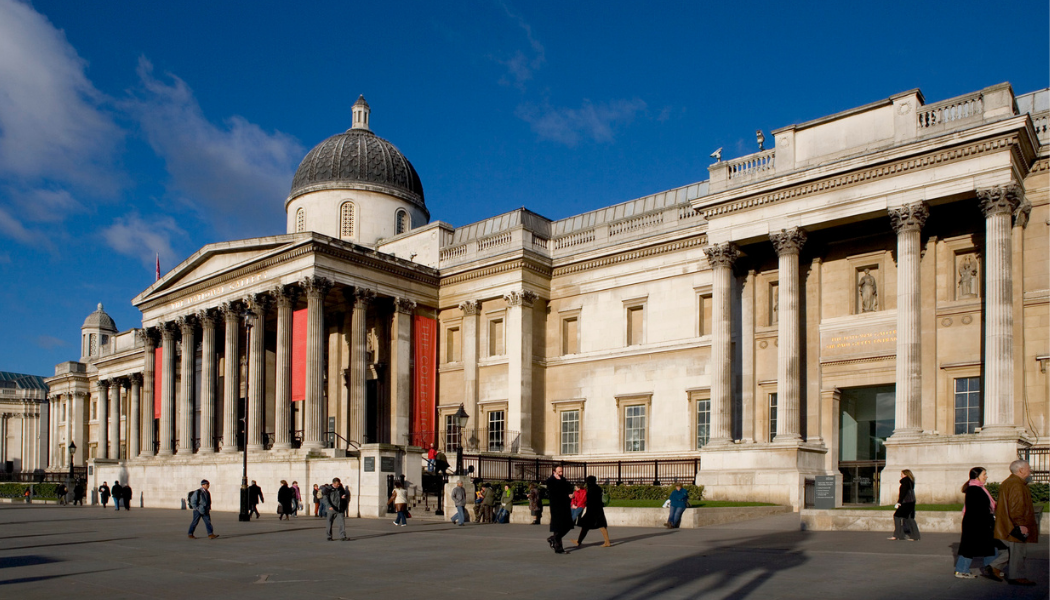The National Gallery has revealed the results of research into the role of the slave trade in its own history.
A research project first begun in 2018 is taking an “all-encompassing approach” to tracing links between slave-ownership and individuals connected in some way to the Gallery.
To date, the research project has focused on 19th-century trustees and donors, as well as some important sitters and painters.
That data shows 67 people have been identified as connected in some with the slave trade, 27 related to abolition, 17 related to both slavery and abolition, and 79 not related to slavery or abolition.
Individuals which it identifies as having links to the slave trade either have links with slavery directly, had benefited from the slave trade, or had connections with the abolitionist movement.
In its research, it defines slavery connections as including a familial relationship – direct or collateral including through marriage – a professional encounter, or third-party ownership of a painting formerly belonging to, commissioned by or depicting a slave-owner.
The Gallery clarifies that as a result of its definition of ‘connections to slavery’, a direct connection with slavery is not implied.
It has also presented in its research individuals connection to the abolitionist movement, and – given the long and complex history of the transatlantic slave trade – those connected to both.
As an example, a subject of its published research, one such subject Sir Thomas Lawrence, painted both slave-owners and abolitionists.
Diego Velázquez has also been identified as connected to both the slave trade and aboltion.
The Gallery’s research shows that Velázquez owned – either through purchase or inheritance – a mixed-race enslaved person, Juan de Pareja, who served as an assistant and whose portrait (Metropolitan Museum of Art, New York) Velázquez painted in 1650.
It also shows that in 1650, Velázquez signed a notarial act giving de Pareja his freedom, which came into effect in 1654. In 1653, “Velázquez made an official complaint to Philip IV requesting the removal of a chained black slave who served as guard by the door of the king’s kitchen’”.

The Gallery said it has presented the data with the goal of objectivity, using only relevant facts.
From the information provided, it said, “users will be able to determine for themselves the nature and extent of these connections.”
The hope of the ongoing research is to transparently represent the profits from plantation slavery and how this might have affected the Gallery’s early history.
The data has been generated through consultation with the online resources of The UCL Legacies of British Slave-ownership project, The Oxford Dictionary of National Biography, and The History of Parliament.
The Gallery has linked that data to National Gallery pictures associated with that person, including any works transferred elsewhere, including Tate. The data has been added to existing records of the works.
The research project started in 2018 when the Gallery approached Dr Nicholas Draper, a founder and then Director of University College London’s Centre for the Study of the Legacies of British Slavery (LBS) , and established an academic partnership to undertake systematic research into key figures in its history.
The first person researched was John Julius Angerstein (1735–1823). In 1824, the British government purchased 38 of Angerstein’s pictures as the foundation of the national collection.
Working for what became Lloyd’s of London, the Gallery explains that “Angerstein amassed a fortune through broking and underwriting marine insurance. An unknown proportion of this was in slave ships and vessels bringing to Britain produce cultivated in the Caribbean by enslaved people. Angerstein acted as a trustee of estates and enslaved people in Grenada and Antigua.”
The Gallery is now embarking on phase III of its research project, which will cover our trustees and donors from 1880 to 1920, after which it will begin phase IV, which aims to cover past picture owners as far back as 1640.










